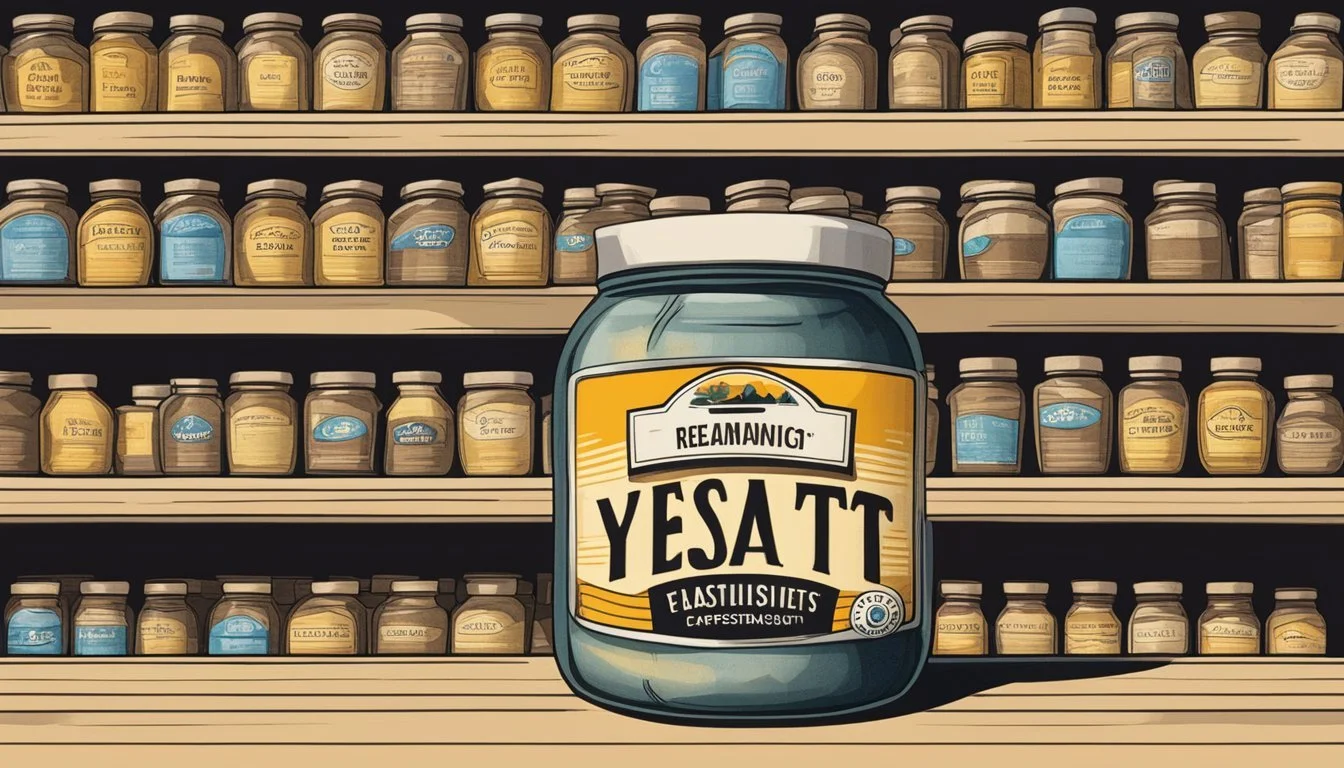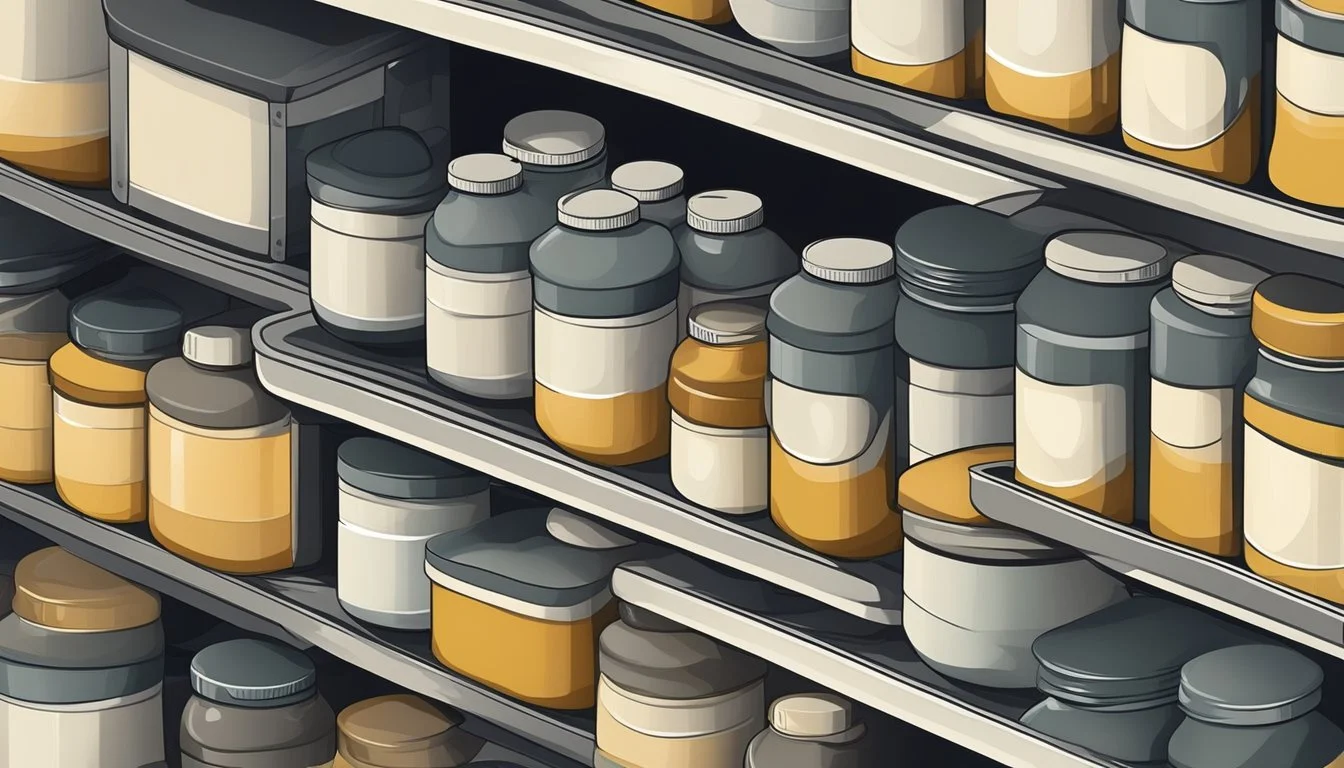Does Yeast Extract Go Bad?
Shelf Life and Storage Tips
Yeast extract, a popular ingredient in many kitchens, is known for its ability to impart a rich umami flavor to dishes. It is commonly found in a variety of prepared and packaged foods, including soups, sauces, and snack foods. This ingredient not only enhances flavor but also contributes to the overall savory profile of a meal.
Yeast extract does not go bad in the traditional sense, but it can lose potency over time. Although it doesn't spoil in the way that perishable foods do, its effectiveness and taste quality may diminish. By paying attention to its storage and checking for any changes, you can ensure that your dishes always benefit from its umami richness.
Stored properly, yeast extract can maintain its flavor-enhancing properties, making it a versatile addition to your culinary arsenal. Keeping it in a cool, dry place and sealing the container tightly will help preserve its quality. In doing so, you can continue to enjoy the savory benefits it brings to your recipes.
Understanding Yeast Extract
Yeast extract is a versatile ingredient renowned for its rich flavor and nutritional benefits. Its composition, production process, and common culinary uses provide a comprehensive insight into its role in various dishes.
Composition and Production
Yeast extract is derived primarily from Saccharomyces cerevisiae, the same yeast used in brewing and baking. The production involves growing yeast cells in nutrient-rich environments. The cells are then broken down either through autolysis or hydrolysis, processes that dismantle the yeast cell walls. Autolyzed yeast extract is made by the yeast self-digesting its proteins into simpler compounds. In contrast, hydrolyzed yeast involves adding external enzymes to break down the proteins. The final product is rich in amino acids, including glutamate, which contributes to its savory, umami flavor.
Nutritional Profile
Yeast extract is a nutrient-dense substance containing a variety of essential vitamins and minerals, particularly B vitamins. Amino acids from the breakdown of proteins support numerous bodily functions. Yeast extract is also a source of glutamates, naturally occurring compounds that enhance flavor. Its nutritional profile is complemented by trace amounts of minerals like iron and potassium, making it not only a flavor enhancer but also a modest source of nutrients in the diet. Beyond nutrients, some consumers may be sensitive to glutamate, an important consideration for those managing dietary sensitivities.
Common Uses in Cooking
Yeast extract is a popular ingredient in many dishes to enhance flavor. It imparts a strong umami taste, similar to soy sauce, and is often used in soups, stews, sauces, and savory snacks. Spreadable yeast extracts like Marmite and Vegemite are beloved in certain regions, often enjoyed on toast. In food manufacturing, yeast extract helps reduce the need for added salt while boosting the savory quality of products. Its versatility and flavor profile make it a key component in both home cooking and commercial food production.
Yeast Extract's Shelf Life
Yeast extract, widely used for its savory flavor, comes with a shelf life that varies based on storage conditions and packaging integrity. Understanding the factors affecting its longevity and how to judge its freshness is essential for safe consumption.
Factors Affecting Freshness
The shelf life of yeast extract largely depends on storage conditions. Keeping it in a cool, dry place away from direct sunlight can extend its potency and effectiveness. Exposure to heat and moisture can degrade its quality more quickly. Tightly sealed containers are crucial to prevent contamination and maintain freshness.
Another factor to consider is the type of packaging. Vacuum-sealed or hermetically sealed packages generally have a longer shelf life. Be mindful of the storage environment, as yeast extract stored in a pantry will generally last longer than one kept in humid conditions. Regularly checking for signs of spoilage, such as changes in color, smell, or texture, can help ensure food safety.
Best Before Date and Freshness
The best before date on yeast extract indicates the period during which the product is expected to retain its best quality. This date focuses on freshness and potency rather than safety. While you can typically use it beyond this date, its effectiveness may diminish.
A freshness test involves checking for off-odors or unusual textures, which can indicate spoilage. Even though it may not pose an immediate health threat, using yeast extract past its prime can affect the flavor and quality of your recipes. Always store it as recommended and keep an eye on the expiration date to ensure it stays effective for as long as possible.
Proper Storage Techniques
To ensure the longevity of yeast extract, specific storage methods are essential, whether you're storing it for a short period or aiming for long-term preservation. This section covers both scenarios and offers tips to prevent spoilage.
Short-Term vs. Long-Term Storage
For short-term storage, keeping yeast extract in a cool, dry pantry is often sufficient. Containers should be airtight to prevent exposure to air and moisture, which can degrade the product. Unopened jars can remain stable at room temperature, maintaining their quality for a few months.
For long-term storage, refrigeration or freezing is advised. Refrigeration can extend the shelf life up to several months, while freezing can preserve it for a year or more. It's crucial to ensure the yeast extract is in a tightly sealed container to avoid moisture condensation, which can lead to spoilage.
Preventing Spoilage
Preventing mold and spoilage in yeast extract involves strict control of storage conditions. Store the extract away from direct sunlight and sources of heat. High temperatures and humidity are the primary culprits that cause spoilage.
Label containers with dates to track their storage duration easily. Avoid frequent opening of jars to minimize contamination from air and hands. When transferring yeast extract to a new container, use clean, dry utensils to keep impurities at bay.
By adhering to these practices, you can significantly extend the shelf life of your yeast extract.
Determining Yeast Extract's Quality
Evaluating the quality of yeast extract involves checking its freshness and identifying any signs of spoilage. These steps ensure that the yeast extract remains safe for consumption and retains its beneficial properties.
Freshness Test Procedures
To test the freshness of yeast extract, use warm water. Mix a small amount of yeast extract in warm water and observe its behavior. Fresh yeast extract will dissolve evenly without clumping. It should emit a consistent, pleasant aroma characteristic of yeast.
Another method involves tasting a small amount. Fresh yeast extract should have a robust, umami flavor. If the taste is off, sour, or significantly different, it may indicate that the yeast extract is no longer fresh.
Storage practices also play a crucial role. Always store yeast extract in a cool, dry place, tightly sealed to prevent exposure to moisture and air, which can degrade its quality over time.
Signs of Spoilage
Recognizing spoilage in yeast extract is essential. Visual inspection is the first step; look for any mold growth or discoloration. Fresh yeast extract should have a uniform color without dark spots or unusual growths.
Another indicator of spoilage is odor. Spoiled yeast extract may have an off-putting, sour, or rancid smell instead of the typical yeast aroma.
Texture changes can also signal spoilage. If the yeast extract becomes unusually dry, clumpy, or develops a slimy texture, it is likely no longer suitable for use.
Sensitivity to these signs ensures that only high-quality yeast extract is consumed, maintaining both safety and flavor integrity in culinary applications.
Health and Dietary Considerations
Yeast extract offers several nutritional benefits and fits into various dietary needs, but it can also pose issues for individuals with certain allergies or sensitivities.
Allergies and Sensitivities
Some individuals may experience allergic reactions or sensitivities to yeast extract. Symptoms can include headaches, digestive issues, or skin rashes. Those with a sensitivity to MSG should be cautious, as yeast extract contains natural glutamic acid similar to MSG.
Pregnant women and individuals with high blood pressure may need to limit their intake due to the sodium content. Yeast extract can be high in sodium, which can affect blood pressure levels if consumed in large amounts.
Yeast Extract for Special Diets
Yeast extract serves as a valuable source of B-vitamins, minerals, and amino acids. It is especially beneficial for vegan and vegetarian diets, lacking animal-derived nutrients. This ingredient is versatile, fitting into various dietary restrictions while providing essential nutrients.
Yeast extract is gluten-free, making it suitable for those with gluten allergies or celiac disease. Furthermore, as a dietary supplement, it supports overall nutrition without compromising dietary preferences. When integrated mindfully, yeast extract enhances flavor while supplementing essential dietary needs.
Alternative Ingredients
When looking for alternatives to yeast extract, many options can serve similar purposes in recipes. These alternatives can enhance flavors and replace yeast extract in various dishes.
Substitutes in Cooking
In cooking, nutritional yeast is a popular substitute due to its similar umami flavor. It can be sprinkled over dishes, added to sauces, or used in soups. Nutritional yeast is not only rich in flavor but also packed with vitamins and minerals.
Marmite and Vegemite are other alternatives often used in spreads and can add a savory depth to recipes. These spreads are by-products of brewing and contain a significant amount of glutamic acid, which contributes to their strong flavors.
Another option is brewers' yeast, which can be used similarly to nutritional yeast. While it has a bitter taste, it can be masked by other ingredients in a dish.
For those avoiding yeast altogether, soy sauce or tamari can be used. These provide umami flavor without the yeast and work well in marinades, dressings, and broths. They contain glutamates similar to those in yeast extract, which enhances the taste of dishes.
Homemade Yeast Extract
Creating yeast extract at home is a feasible alternative, though it requires some patience and time. Start with fresh bakers' yeast or brewers' yeast. Dissolve the yeast in water and allow it to ferment, which involves breaking down the yeast cells to release the flavors.
After fermentation, the mixture needs to be heated to stop the fermentation process. Once cooled, the mixture is pressed or filtered to concentrate the yeast flavors, resulting in a homemade yeast extract.
Homemade yeast extracts can be stored in the refrigerator for a limited time and used in small quantities in soups, sauces, and baking. This method avoids any additives, providing a natural and controllable ingredient for your recipes.






